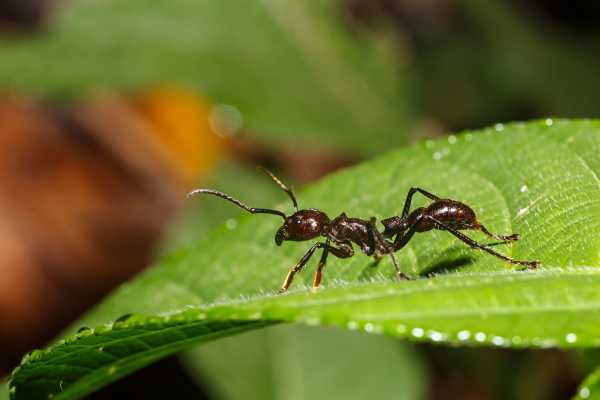The Most Painful Insect Stings Are Not Necessarily The Most Deadly!
Bees are sometimes associated with painful stings. Aside from the fact that not all bees sting, as discussed elsewhere on this site, of those that do, the pain from a bee sting can range from negligible to moderate (see Which Bee Has The Most Painful Sting?).
Indeed, there are many other insects with far more painful stings than bees.
So which insect stings are the most painful? This question has been the topic of research, notably a study by scientist, Justin O Schmidt published in 2019.
One note of caution though: Schmidt's 2019 study only represents a snapshot from a restricted sample of 96 stinging insects of the insect order Hymenoptera.
Schmidt noted that the sample represented those taxa that were often targeted for investigation, were historically known for painful stings, or were available.
In summary, sting pain determinations were made for 96 species in 62 genera including:
- 38 ants in 27 genera,
- 25 social wasps in 12 genera,
- 6 social bees in 2 genera,
- 12 solitary bees in 10 genera, and
- 15 solitary wasps in 11 genera.
Ouch! Most Painful Insect Stings According To Justin O. Schmidt
 Bullet ant, Paraponera clavata - this small insect delivers a very painful sting!
Bullet ant, Paraponera clavata - this small insect delivers a very painful sting!According to Schmidt's 2019 study, of the 96 stinging insects assessed, the most painful insects stings are:
- The Bullet ant, Paraponera clavata
Schmidt's description:
“Pure, intense, brilliant pain. Like walking over flaming charcoal with a three-inch nail embedded in your heel.” - The warrior wasp, Synoeca septentrionalis
Schmidt's description:
“Torture. You are chained in the flow of an active volcano. Why did I start this list?” - The Tarantula hawk wasp species Pepsis grossa and Pepsis thisbe
Schmidt's description:
“Blinding, fierce, shockingly electric. A running hair dryer has just been dropped into your bubble bath.”
Schmidt's General Observations On Insect Stings, Pain and Toxicity
- Schmidt notes that the stings of social insects are in general, more painful than those of solitary species.
- A more painful sting is not necessarily a more toxic one. Schmidt found no relationship between sting pain and level of lethality.
For example, Pogonomyrmex cunicularius (Argentine harvester ant) and Pogonomyrmex (North American harvester ants) had chemically more toxic, but less painful stings than the Bullet ant.
That said, Schmidt noted that overall, the venom lethalities of social bees and social wasps were higher than those of their solitary counterparts.
It should be noted that lethality in insect stings is evolved primarily to counter threats and predators (and natural predators can evolve some immunity to the venom).
Furthermore, venoms react differently according to species. For example, the venom of harvester ant P. maricopa venom, was less toxic against a lizard, Phrynosoma cornutum (a predator of P. maricopa), than it was for mice.
Multiple repeated stings and/or severe allergy would generally be required to kill an average human.
Resources
- Schmidt JO. Pain and Lethality Induced by Insect Stings: An Exploratory and Correlational Study. Toxins (Basel). 2019;11(7):427. Published 2019 Jul 21.
- The Natural History Museum, London.
- W. L. Meyer (1996-05-01). "Chapter 23 — Most Toxic Insect Venom". Book of Insect Records. University of Florida. Archived from the original on 2012-06-01.
If you found this page helpful or interesting, I'd really be grateful if you would share it with others - if not this page, perhaps another, such as Gardening For Bees.
Thank you so much :) .